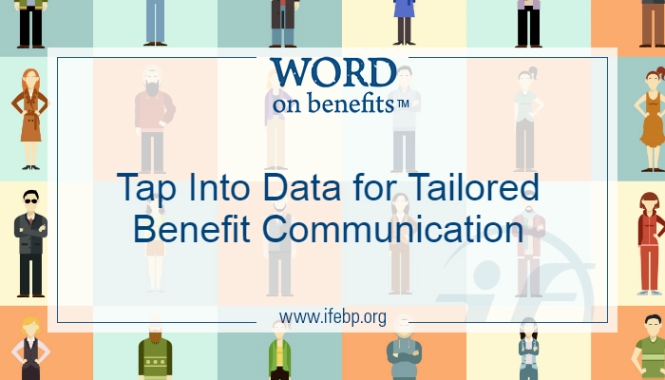The below article was posted by the International Foundation of Employee Benefit Plans on October 27, 2016 and was written by Kathy Bergstrom, CEBS.
Tailoring pension and benefits messages by age or generation is a good first step toward helping plan members make better decisions. But that may not go far enough. “An evolution is coming to more personalized retirement and benefit plan communications,” said Michelle Oram, CEBS, director of product development at Manulife in Waterloo, Ontario. Oram made the remarks during her presentation “Financial Education—Let’s Get Personal” at the 35th Annual ISCEBS Employee Benefits Symposium in September in Baltimore, Maryland.

“Now we segment communications based on age or generation. It’s a step in the right direction, but painting everyone with four little brushes still generalizes,” she said. The pitfall is that messages are based on assumptions rather than behavioral data. “Employee needs are more about personal circumstances than age.”
Oram gave an example of two 55-year-olds who, even though they’re the same age, have different life situations and financial priorities.

Meet Dave. He is 55, is married, has grown children and thinks about retirement a lot.
Dave’s financial priorities: maintaining his lifestyle in retirement, saving for retirement and saving for his family’s future.
What Dave needs: retirement lifestyle coaching, retirement income projections, retirement planning advice and estate planning support.
Key message for Dave: Deposit his regular bonus into his RRSP.
 Meet Marilyn. Also 55, she is divorced, has younger dependent children and is not ready to retire.
Meet Marilyn. Also 55, she is divorced, has younger dependent children and is not ready to retire.
Marilyn’s financial priorities: paying for her kids’ education, saving for retirement and reducing debt.
What Marilyn needs: retirement income projections, tips to get on track and a financial wellness program that includes debt management.
Key message for Marilyn: Increase her regular contribution to her retirement plan.
But how does a plan sponsor figure this out without invading someone’s privacy? Data, Oram said, and plan sponsors and administrators already have a lot of it.
They have basic demographic information such as the age and gender of their employees. They also have information on life events from plan enrollment such as when someone gets married or divorced or has a child.
They have employment data such as job title, salary and promotions, and they have behavioral data from retirement plans such as investment selections and whether employees maximize the employer match.
With that data in hand, plans should identify key messages and actions. For example, they can look at who doesn’t take full advantage of the match and create a personalized message motivating them to up their contributions.
They can look at who has deposited bonuses in the past and craft an e-mail encouraging those employees to do so again.
Messages must be personal, however, to catch employees’ attention, she said.
Strategies that work include e-mails with a meaningful sender name and subject line and with a link to a personalized video or URL outlining the impact the desired behaviour will have on the employee’s retirement plan.
“Benefits communications are competing with a lot of personalized messages your employees see every day,” Oram said.
